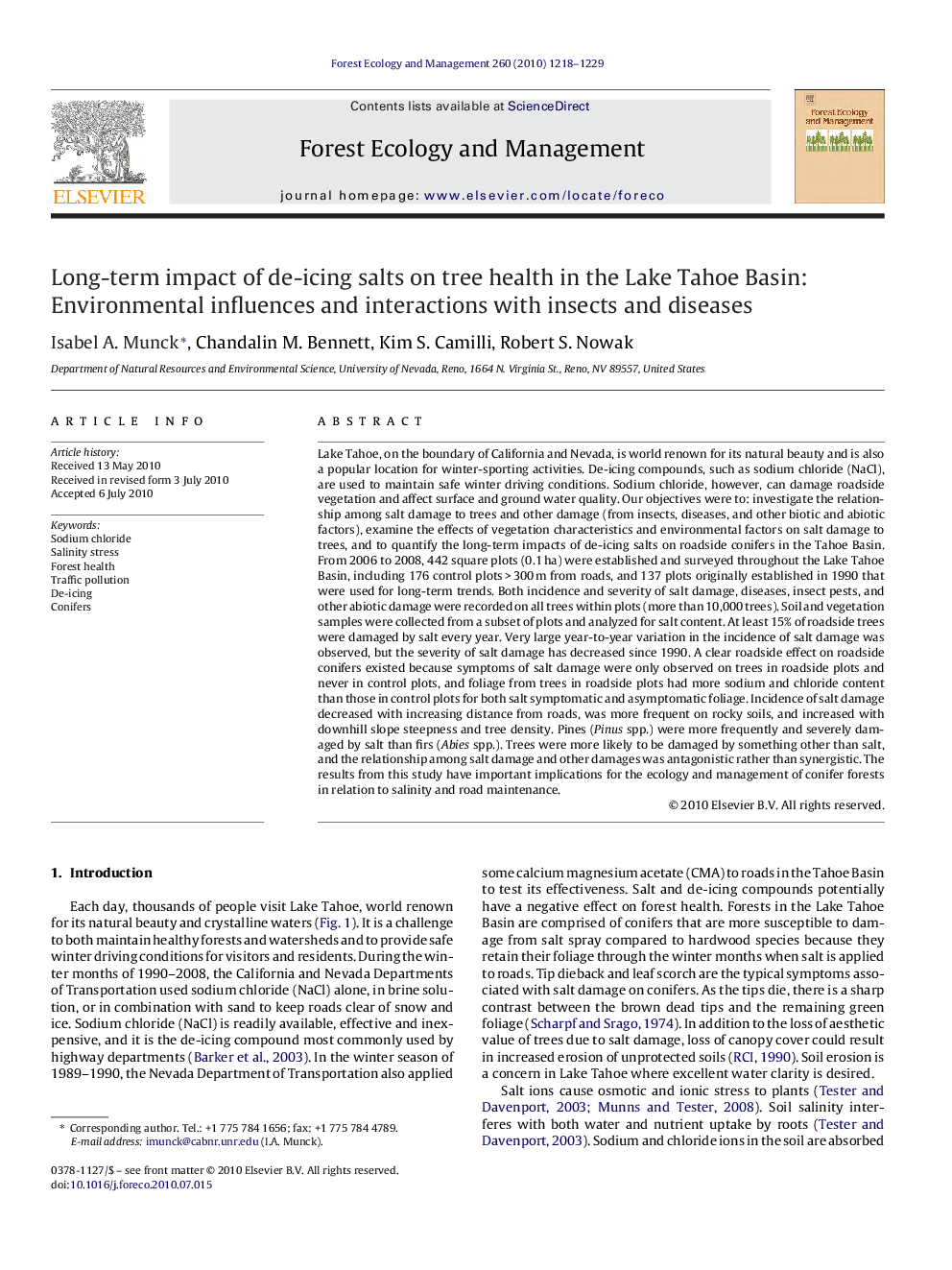| کد مقاله | کد نشریه | سال انتشار | مقاله انگلیسی | نسخه تمام متن |
|---|---|---|---|---|
| 88116 | 159284 | 2010 | 12 صفحه PDF | دانلود رایگان |

Lake Tahoe, on the boundary of California and Nevada, is world renown for its natural beauty and is also a popular location for winter-sporting activities. De-icing compounds, such as sodium chloride (NaCl), are used to maintain safe winter driving conditions. Sodium chloride, however, can damage roadside vegetation and affect surface and ground water quality. Our objectives were to: investigate the relationship among salt damage to trees and other damage (from insects, diseases, and other biotic and abiotic factors), examine the effects of vegetation characteristics and environmental factors on salt damage to trees, and to quantify the long-term impacts of de-icing salts on roadside conifers in the Tahoe Basin. From 2006 to 2008, 442 square plots (0.1 ha) were established and surveyed throughout the Lake Tahoe Basin, including 176 control plots > 300 m from roads, and 137 plots originally established in 1990 that were used for long-term trends. Both incidence and severity of salt damage, diseases, insect pests, and other abiotic damage were recorded on all trees within plots (more than 10,000 trees). Soil and vegetation samples were collected from a subset of plots and analyzed for salt content. At least 15% of roadside trees were damaged by salt every year. Very large year-to-year variation in the incidence of salt damage was observed, but the severity of salt damage has decreased since 1990. A clear roadside effect on roadside conifers existed because symptoms of salt damage were only observed on trees in roadside plots and never in control plots, and foliage from trees in roadside plots had more sodium and chloride content than those in control plots for both salt symptomatic and asymptomatic foliage. Incidence of salt damage decreased with increasing distance from roads, was more frequent on rocky soils, and increased with downhill slope steepness and tree density. Pines (Pinus spp.) were more frequently and severely damaged by salt than firs (Abies spp.). Trees were more likely to be damaged by something other than salt, and the relationship among salt damage and other damages was antagonistic rather than synergistic. The results from this study have important implications for the ecology and management of conifer forests in relation to salinity and road maintenance.
Journal: Forest Ecology and Management - Volume 260, Issue 7, 31 August 2010, Pages 1218–1229